DIY Recipe Using Rosemary and Oil Can Reverse Hair Thinning as Effectively as Rogaine — For Pennies!
Who would ever dream something so healthy and sweet smelling would work better than drugs!
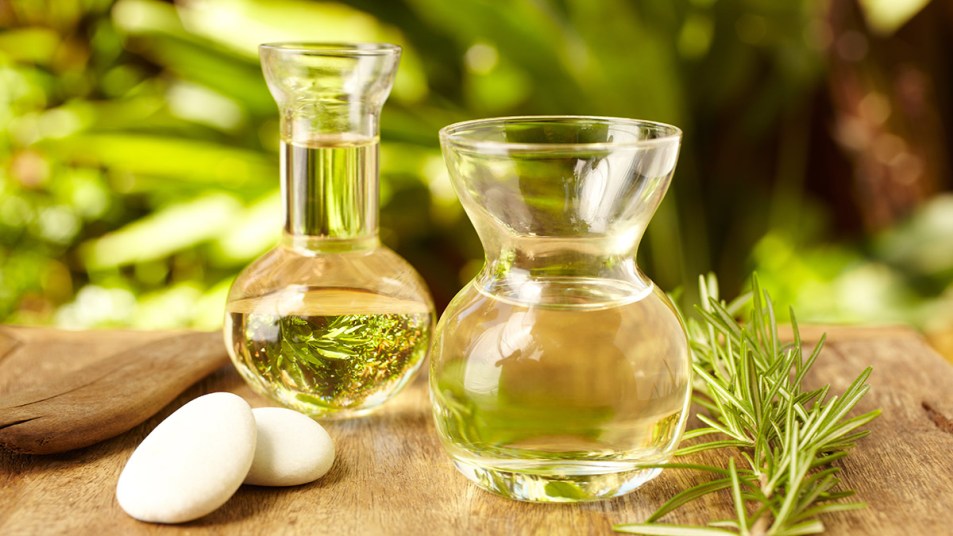
If you’re like most women over 50, you’ve noticed that your once thick hair is gradually getting thinner and thinner. If you noticed that you have both fewer strands and finer strands, you’d be right. And you may have considered trying Rogaine for Women but hesitate because of the expense and the hassle. Well, if you’re looking for something all-natural that can help thinning hair grow back thicker, you’re in luck. Researchers have recently found that plain old rosemary oil can work better than prescription drugs. Although Social Media Influencers have recently jumped on the bandwagon, touting the benefits, using rosemary-infused rinses to stimulate hair growth has been used in Mediterranean cultures for hundreds of years. Keep reading to learn how to make rosemary oil for your hair, what the benefits are and how to use it to make your hair look gorgeous.
How rosemary oil improves hair and scalp health
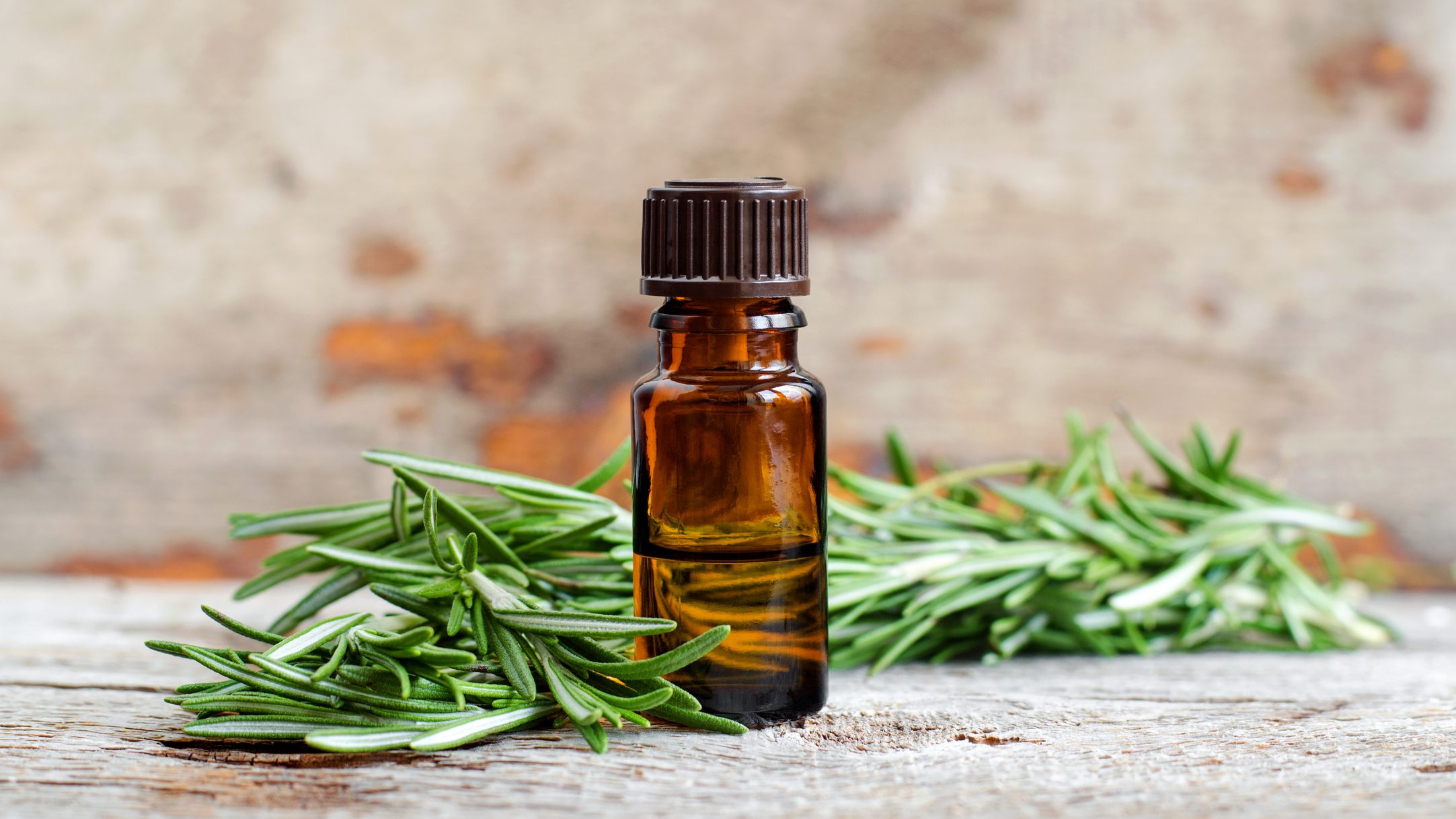
Studies have shown that rosemary essential oil can stop hair thinning, improve overall hair health and even prompt new strands to grow back in their place. Here’s how:
1. Rosemary oil can speed hair growth
A 2015 study published in SkinMed pitted rosemary oil against, minoxidil, the main ingredient in the hair growth drug Rogaine. It found that subjects who applied the oil to their scalp for over six months saw their strands multiply as much as those who used Minoxidil — due to a unique blend of ingredients in the woody plant. “Rosemary contains ursolic acid, rosmarinic acid and other compounds that deliver oxygen-rich blood to the scalp to promote new growth,” explains Alan J. Bauman, MD, ABHRS, IAHRS, FISHRS, of the Bauman Medical Hair Transplant & Hair Loss Treatment Center:
Another study showed that rosemary oil acts as a natural antiseptic, killing bacteria on the scalp and preventing strands from shedding.
And that’s not all: In 2016, researchers in the Balkan Med Journal found that using rosemary oil improved blood circulation and overall skin health. “We have determined that, in addition to its anti-inflammatory and antioxidant effects, R. officinalis has vasodilatory effects that contribute to increased skin flap survival,” the researchers said.
Other research has shown that rosemary oil can prevent stress hormones from wreaking havoc on hair by preventing the DHT (testosterone hormone) from attaching to strands. (Click through to learn how marine collagen can help regrow sparse strands.)
2. Rosemary oil can increase hair’s shine
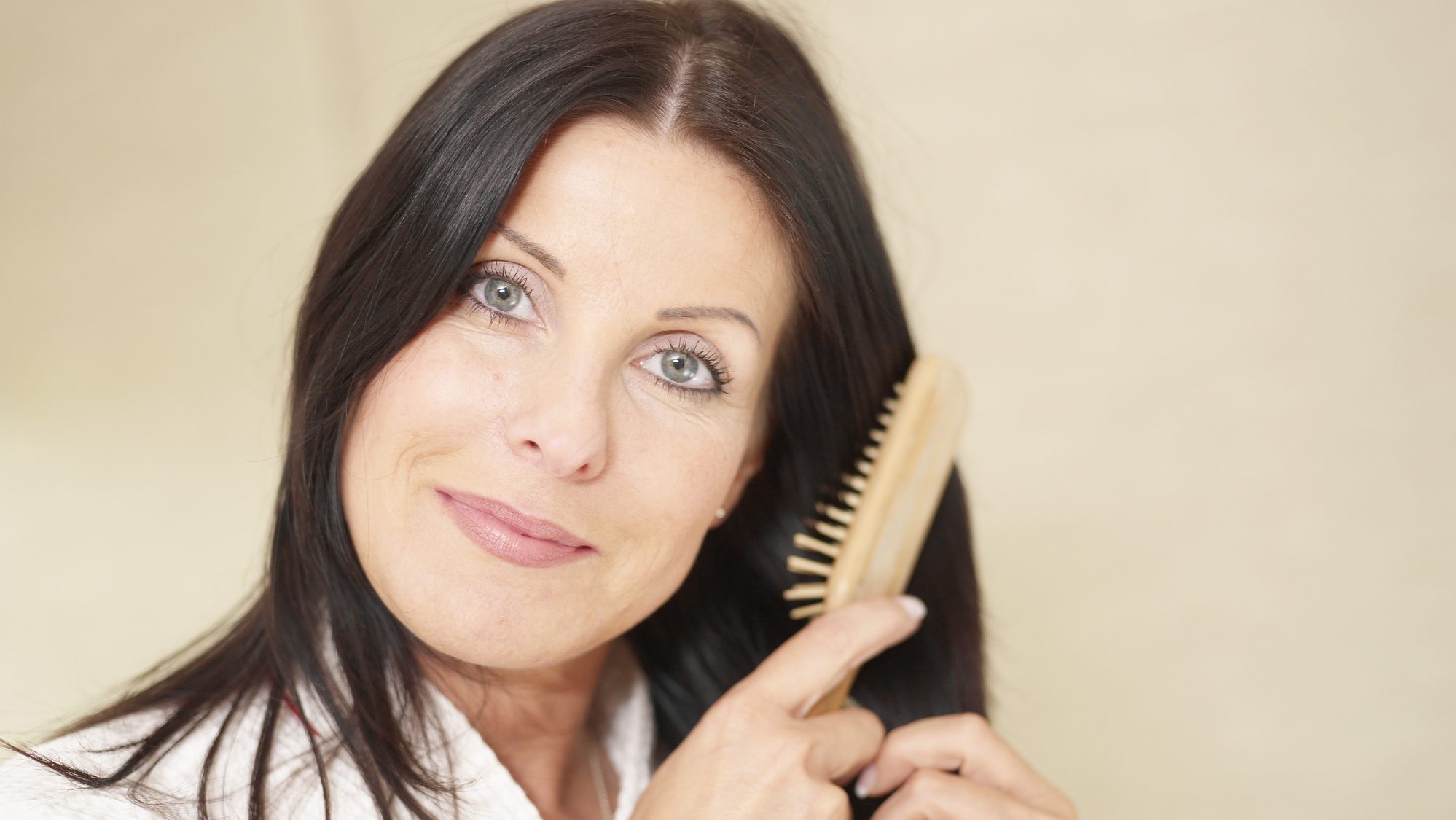
Because environmental factors like weather, chemical processes and aging can cause our tresses to look dry and lifeless, we tend to combat that by over-conditioning strands, which leads to other problems like product buildup and dull hair. Rinsing instead with antioxidant-rich rosemary oil can hydrate and nourish hair and improve hair texture without harsh chemicals.
3. Rosemary oil can heal an itchy, flaky scalp
Healthy hair starts at the scalp, and excess oil can make the scalp a breeding ground for flake-causing fungus. But instead of dryness-inducing dandruff shampoo, try rosemary oil. “Its antioxidant and anti-inflammatory properties can soothe an irritated scalp, and its antifungal and antibacterial characteristics might combat dandruff and other scalp conditions by fighting sebum production, scalp dryness, dandruff and itchy scalp,” attests Dr. Bauman. (Click through to learn whether you have dandruff vs. dry scalp)
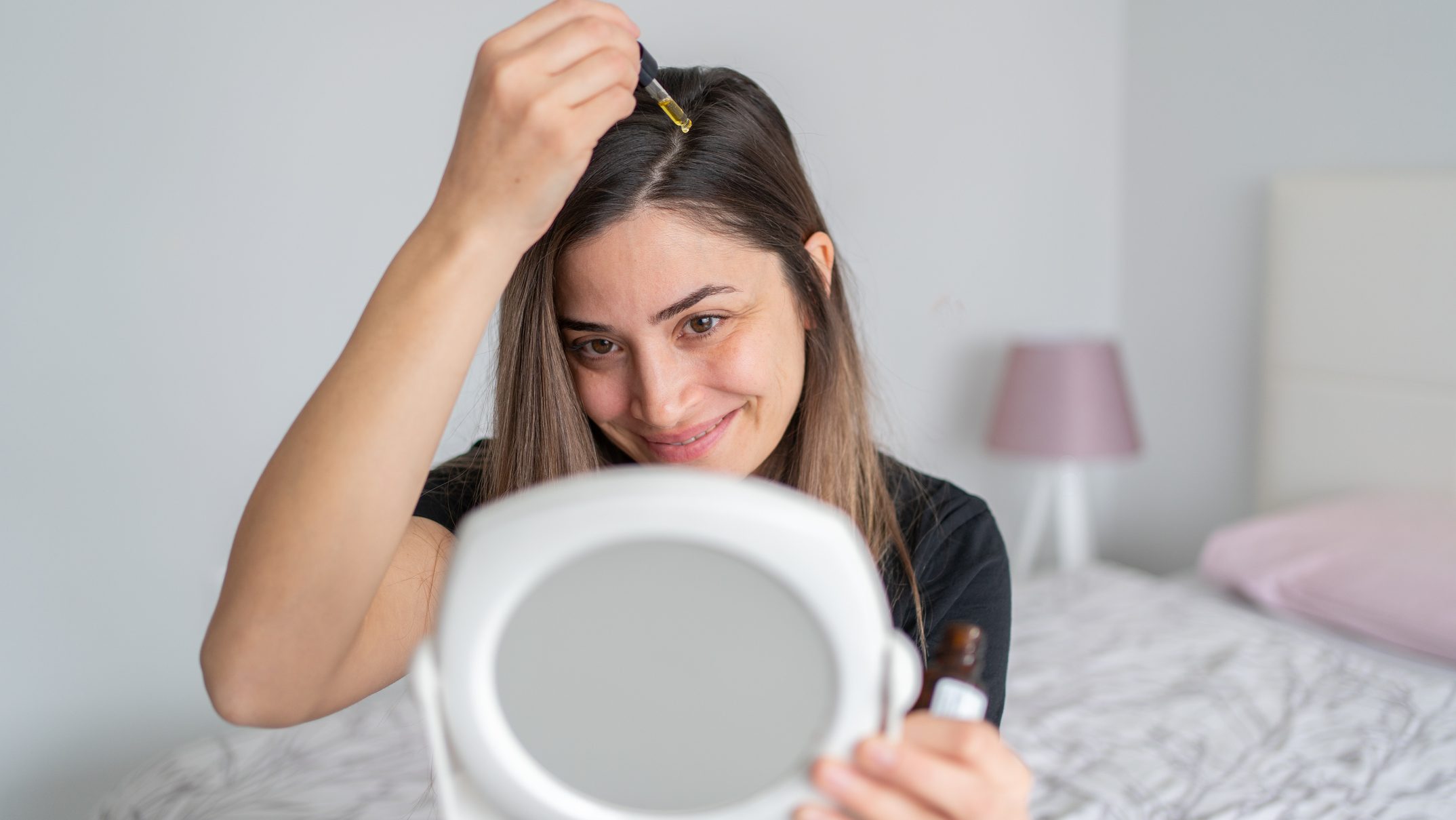
Bonus benefit: Rosemary oil heightens focus and alertness
You can reap even more benefits from the essential oil by giving it the sniff test! As a bonus, rosemary oil has been shown to banish brain fog and heighten focus, alertness and mental stamina in 30 seconds. Taking a few slow, deep sniffs of its woodsy scent daily can energize the brain region that keeps memory sharp and improves recall. (Click through to discover more essential oils that boost focus, memory and more.)
How to make rosemary oil for hair
While you can easily buy a small bottle of rosemary oil for $10 on Amazon and dilute 3-5 drops of the oil with two tablespoons of a carrier oil, like argan or jojoba, you can whip up an even bigger batch at home for pennies.
Celebrity hairstylist Cody Renegar, who works with Gwyneth Paltrow says the best homemade recipe for whipping up this magical treatment for our locks is as follows:
- Combine four sprigs of fresh rosemary with two cups of a hydrating carrier oil (such as olive oil) in a slow cooker and cook on high for two hours with the lid off.
- Let it cool for 30 minutes.
- Strain and store it in an airtight container in the fridge.
The 5 best uses of rosemary oil for hair
Now that you know how to make rosemary oil for hair, here are some easy ways to put it to use. Doctors note you should always do a patch test before applying a new oil to your scalp, as you can be allergic and not know it.
1. Massage rosemary oil on to the scalp
Studies have shown that the oil, coupled with the pressure from massage, provides the most optimum benefits. “Simply massage the rosemary oil mixture onto your head for 5 to 10 minutes. Wrap your hair in a towel, shower cap or bonnet and leave it on overnight, then rinse in the morning. Do this twice a week, and watch your hair grow and shine,” advises Renegar.
Or try a hot rosemary oil massage: Place 2 Tbs. sesame oil into a microwave-safe bowl and heat for 30 seconds until warm. Stir in 3 drops of rosemary oil. Dip your fingertips into the mixture, then massage into hair from roots to ends, starting at the scalp. Clip your hair up under a shower cap and sit for 30 minutes. Shampoo and rinse thoroughly. Repeat once or twice a month for the best results!
(Click through for the best scalp massagers to help boost hair growth for women over 40.)
Bonus: Dip a cotton swab into the oil mixture, apply to eyebrows, massage in then let sit for 10 minutes before washing off to naturally plump up sparse and thinning brows!
2. Spritz the oil on to scalp and hair
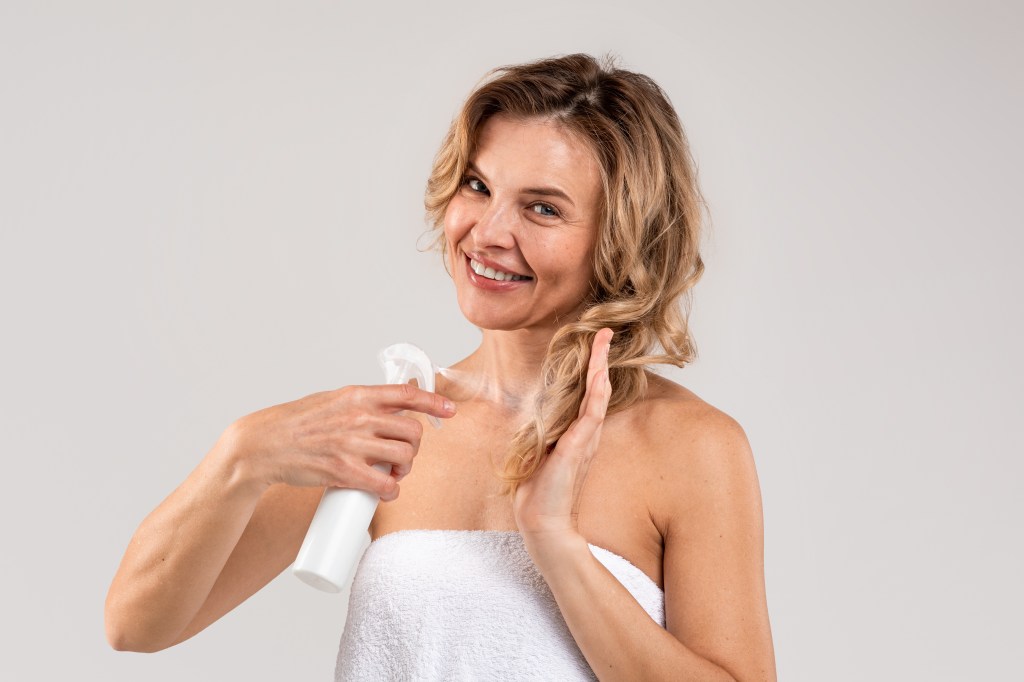
In an empty spray bottle, mix two drops of rosemary oil with four cups of water and spritz on the scalp and hair nightly before bed.
3. Apply a rosemary-oil infused mask
Give your strands a pampering spa treatment with a homemade rosemary mask! Mash together half an avocado, ¼ cup of coconut oil and 15 drops of rosemary oil. Apply to hair and leave on for 20 minutes, then rinse with cool water.
4. Give your shampoo a rosemary oil boost

Dr. Bauman says an easy way to incorporate rosemary oil into your routine is to simply add a few drops to your shampoo! “Allow the shampoo to sit on your scalp for about three minutes, then rinse and condition as usual.”
5. Apply a rosemary leave-in rinse
A woman who calls herself the The Aussie Rapunzel shared a video using a rosemary oil rinse on her impressively long locks. She includes her method for making the rinse: Boil two sprigs of fresh rosemary for 10 minutes, let it cool down completely (popping it in the fridge can speed things up), then apply to hair after shampooing and conditioning and don’t wash it off! She also added 10 drops of rosemary extract oil as it boiled for some extra hair-growing oomph, but says that’s optional.
For more ways to make and use rosemary oil watch this video
Click through these stories for more easy ways to boost thinning hair growth.
Castor Oil Proven to Regrow Hair on Head, Eyebrows + Eyelashes — For Pennies A Day!
Best Scalp Massagers to Help Boost Hair Growth for Women Over 40
Thin Brows and Lashes? Try These 3 Cures for Boosting Hair Growth

















